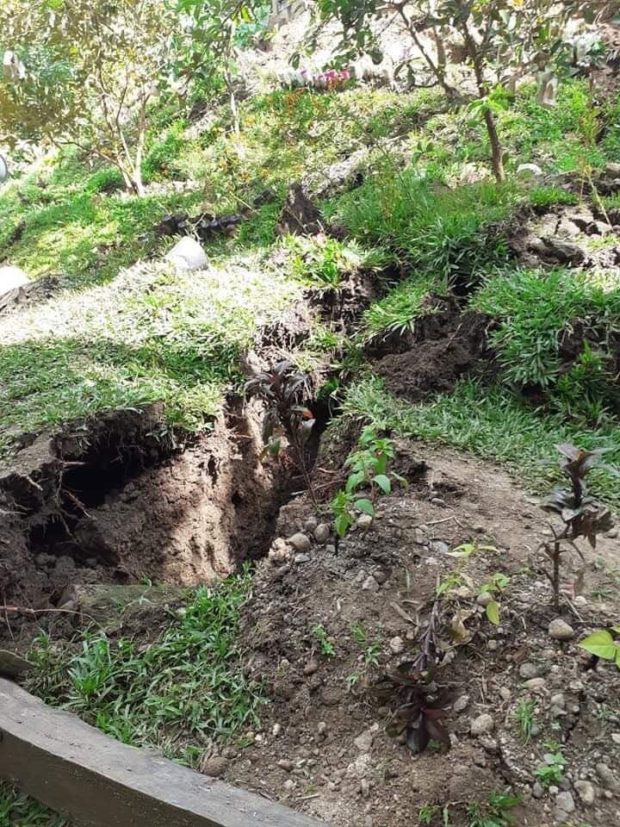Ground cracks open in Zamboanga City village

Cracks left when the ground in a neighborhood in Sangali, Zamboanga City moved last Feb. 10. —JULIE ALIPALA
ZAMBOANGA CITY, Zamboanga del Sur, Philippines — Councilor Mike Alavar of this city would want the declaration of an area in Barangay Sangali as a danger zone after the ground moved last Wednesday, Feb. 10, and left large cracks that could gobble up houses.
Alavar, chair of the city legislature’s committee on disaster resilience, said the villagers had to abandon their houses after the incident last Wednesday, Feb. 10.
Alavar, who did an inspection in Sangali’s Sitio Siguinan, noted that 2 two hectares of farm were eroded, trees had fallen down, and the foundations of several houses had been uprooted.
The houses of five families were directly affected by the unusual phenomenon.
“Their concern right now is where they will stay and where to put their farm animals. I am appealing to the local government to look deeper into this incident and for the Mines and Geosciences Bureau (MGB) to assess and study the situation,” Alavar said.
Article continues after this advertisementAt around 8:30 p.m. on Feb. 10, residents of the village scampered for safety as they felt the ground move, accompanied by loud humming and crackling noise.
Article continues after this advertisementAnnie Rose Mira, a resident of Siguinan for 12 years, said she and her family were shocked and afraid when their house started to give way as the ground below gradually opened.
“It’s like stones breaking their way out, opening the soil, (then) leaving huge and deep cracks. We thought the ground was eating our house,” Mira recalled.
“We thought it was an earthquake, but the vibrations and loud humming were just within our neighborhood,” Mira added.
Initially thinking it was just their house that was affected, Mira realized later that their neighbors had the same experience.
This was when they decided to immediately abandon their house.
Engineer Rommel Allan Labayog, officer-in-charge of the Philippine Institute of Volcanology and Seismology (Phivolcs) here, said the incident was categorized as a creep with features similar to an earthquake.
“Creep is a slow type of landslide that breaks the rocks and roots of trees (and) the earth also vibrates. The surface of the soil may appear dry but underneath, it’s wet and could no longer hold roots and solid particles underground,” Labayog explained.
Like Alavar, he is urging the MGB to look into the situation.
[atm]